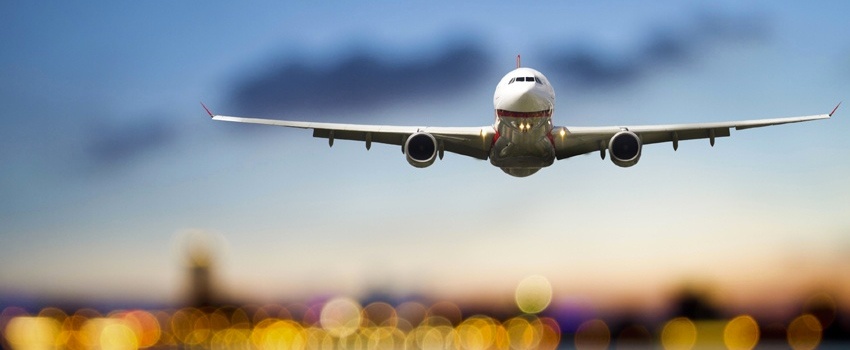
Vistair supports a LinkedIn Group dedicated to smart technology for aviation, simply SmartTech for Aviation. This has now reached some 1,200 professionals on the topic, hotly debating current and future developments. Over the past year, the Group has also been contributing to a survey about the sector’s thinking – probably the first of its kind in this developing field.
Thanks to our support, we are proud to be able to announce the survey’s overall findings.
We have split this into two Blog postings: The Present and then, of course, The Future.
This is the first of the two.
Who took part?
An astonishing 50% of respondents were owners/board members/senior managers/departmental heads. Therefore half of all the comments are from decision and policy makers.
Yet 30% categorised themselves as middle/line management, supervisory, licence holders or technical experts. 12% were flight deck personnel. So 42% of the survey’s contributors are directly involved with smart tech usage or are users themselves.
The largest percentage involved is in airline, business aviation or rotary companies (38%.) – but 27% are from aerospace companies, industry associations or support services – whose opinions cannot be ignored. 12%: aviation consultancies.
Overwhelmingly, at 42%, our answers came from flight/safety/training/ground operations. The most significant other sector of respondents covered IT design and R&D at 18%, while 12% are marketers and 9% deal with Govt./industry liaison.
And 52% operate globally, with 23% in Europe, 14% North America, nine percent Asia.
A survey worth taking note of!
How is smart tech used in their organisations?
Deployment
|
Flight deck
|
35%
|
|
Administration
|
23%
|
|
Operations
|
15%
|
|
Ground handling
|
11%
|
|
Passenger service
|
11%
|
Operating systems
Fairly predictable: Apply iOS at 49%; Microsoft products at 26%; combinations of these at 20%; “Other” oddly at six per cent. No respondent went for Google/Android but this might simply be due to the 2014 timing of our survey, when Android was at an early stage of penetrating the aviation sector.
Deployment issues
We asked: which department is responsible for this equipment. It's clear the options we offered were badly defined as we got:
|
Information technology
|
54%
|
|
My own department
|
37%
|
|
Operations
|
6%
|
|
Other Option
|
3%
|
The “My own department” didn't offer the opportunity to state which department this was but, given the high level of board members, it is reasonable to consider that such figures feel they are responsible for specifying and overseeing equipment for deployment.
More robust were the responses we got on how the equipment is actually deployed … after-sales departments, please note!
|
Directly to a user
|
65%
|
|
By aircraft/desk/role
|
21%
|
|
Provided by me personally, by my own judgement
|
9%
|
|
By flight/shift
|
6%
|
Detailed Report
Why are these organisations using smart technology?
Customer reasoning is very broad. Emphasis on the top 12 issues addressed by smart technology is separated by just one or two percentage points, demonstrating the extensive value being provided by this three/four year old sector.
|
Easy updates and notifications
|
14%
|
|
Process simplification
|
13%
|
|
Improved data communications, including imagery
|
12%
|
|
Increased services/capabilities
|
12%
|
|
Enhanced working environment
|
12%
|
|
Weight reduction
|
10%
|
|
Better economics
|
8%
|
|
Safety/security
|
7%
|
|
Improved oral/contact communications
|
4%
|
|
Becoming an industry standard
|
4%
|
|
Other Option
|
1%
|
Reviewing investment
Interestingly, for the vast majority of respondents, once a decision on kit is made, it tends to be backed. Loyalty is fairly automatic (57%) while management and user/department review stands at 39%.
|
Manufacturer/software developer upgrades are made automatically when available
|
45%
|
|
At the discretion of management
|
30%
|
|
Over a regular period (eg annually)
|
12%
|
|
At user/department request
|
9%
|
What else go they buy?
In direct survey mode, we got this:
|
Specialist software
|
50%
|
|
Case
|
27%
|
|
Holder
|
20%
|
But, when it came to asking for comments, the responses were far more complex. Here are some examples:
Good reader, secure content locker
The FAA has determined that continuous protection is required to satisfy paperless operations approval requirements. Other CAAs are expected to follow suit beginning in 2014.
Skypaq electronic log book
e-Docs, Charts, eForms, Passenger List, eLearning, Social network.
A number of apps are available for download on the company App Store. More will be made available as the program matures
Airbus performance
Airnav
Lido charts
Documents
Email
Aerodoc's with company flight data proprietary software.
mobile RMS (resource management for mobile resources such as tow trucks, follow-me, etc.)
Next, we will share how our respondents see the future of Smart Technology for Aviation. Meanwhile, your comments would be welcome.

